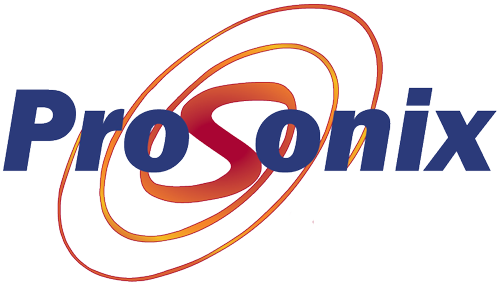Solvent Recovery and Separation
 Oil sands processing in Northern Canada utilizes a variety of solvents and naphtha to assist in the separation of the Bitumen from the water and sand. These fluids can help promote chemical reactions, accelerate processing time, and reduce processing costs. Many of these
Oil sands processing in Northern Canada utilizes a variety of solvents and naphtha to assist in the separation of the Bitumen from the water and sand. These fluids can help promote chemical reactions, accelerate processing time, and reduce processing costs. Many of these
must recovered due to their high costs, importance of water recovery, or issues associated with release of the chemicals to the environment.
Issues Associated with Oil Sands Processing
- The sand that is separated is very abrasive and can cause excessive wear. Devices that accelerate flow or cause impingement will wear very rapidly.
- Bitumen and froth are not well suited for heating in traditional heating devices due to issues with pressure drop, abrasion, and plugging/fouling.
- Solvents sometimes require high temperatures for processing yet can be very unstable and flash in the pipe if temperatures are not controlled properly.
PSX Heater Solution
| Eliminate Steam Hammer | |
The PSX heater can be installed to heat up the process fluid prior to the flash vessel or recovery tank, and has a high heating capacity and can achieve up to a 250 °F temperature rise in a single pass. For difficult to pump slurries or unstable solvents, the PSX heater can be arranged in a Multi-stage configuration to stage the heating to optimize the process. The key to efficient, safe, and predictable steam injection is to inject steam at sonic velocity to achieve choked flow. By achieving choked flow, sonic velocity conditions can be achieved for steam injection. All steam injectors need to operate in a choked flow manner for good, non-violent mixing. The PSX heater is an internally modulated heater that varies the mass flow rate of steam by changing the area in which the steam may pass. This type of modulation allows the full steam pressure to always be present at the point of injection regardless of plug position. Flow rates can range from 1 – 10,000 gpm.
Key PSX Heater Direct Steam Injection Benefits
- Eliminate Process Upsets as the internal steam control design of the PSX heater controls the steam mass flow and not the steam pressure thus eliminating steam hammer and vibration issues.
- Lower maintenance due to the PSX heater’s self cleaning design (no scaling or plugging/fouling).
- Low pressure drop (typically 1-2 psig) reduce pump integration issues and flow disruptions, and provides energy savings by lowering slurry pump demand.
- Improved temperature control (typically +/- 1 °F ) allows for a more reliable heating process.
- Improved Reliability as a variety of alloys and wear coatings are available to address wear issues.









 Inline process heating with Direct Steam Injection has multiple applications in a variety of process and utility applications. Many applications such as mineral processing, pulp and fiber slurry pre-treatment, oil sands mining and others are not well suited for traditional methods of heating. Typical challenges encountered are corrosive fluids, abrasive particulate, viscosity changes, plugging and fouling, eating for water, slurry, sludge, and aggressive fluid heating applications. Direct Steam Injection for Inline Heating is a very good choice for a variety of applications. One of the fundamental principals for efficient and reliable steam injection is the ability to produce and deliver high velocity steam. High velocity steam is what assures rapid and complete condensation and mixing of the steam in the fluid.
Inline process heating with Direct Steam Injection has multiple applications in a variety of process and utility applications. Many applications such as mineral processing, pulp and fiber slurry pre-treatment, oil sands mining and others are not well suited for traditional methods of heating. Typical challenges encountered are corrosive fluids, abrasive particulate, viscosity changes, plugging and fouling, eating for water, slurry, sludge, and aggressive fluid heating applications. Direct Steam Injection for Inline Heating is a very good choice for a variety of applications. One of the fundamental principals for efficient and reliable steam injection is the ability to produce and deliver high velocity steam. High velocity steam is what assures rapid and complete condensation and mixing of the steam in the fluid. More and more agricultural and dairy farms as well as beef, hog and poultry operations are considering the use of anaerobic digestion for biogas production. These operations typically produce a significant amount of organic matter in the form of manure. Anaerobic digestion is a biological process that breaks down organic solids. Manure can be processed in anaerobic digesters and the byproduct is methane gas. The methane gas can be captured, stored and used to run electrical generators and boilers for use in the farm operations. Heat exchangers can face the following challenges when heating sludge:
More and more agricultural and dairy farms as well as beef, hog and poultry operations are considering the use of anaerobic digestion for biogas production. These operations typically produce a significant amount of organic matter in the form of manure. Anaerobic digestion is a biological process that breaks down organic solids. Manure can be processed in anaerobic digesters and the byproduct is methane gas. The methane gas can be captured, stored and used to run electrical generators and boilers for use in the farm operations. Heat exchangers can face the following challenges when heating sludge: